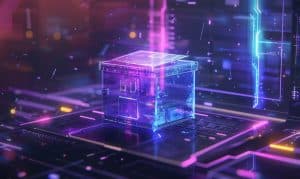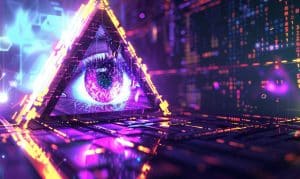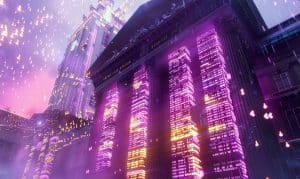5 Key Technologies that Power the Metaverse

In Brief
Intelligent digital worlds are creating immersive Metaverse for the next generation
In its early stages, the metaverse has many challenges to be addressed
The metaverse refers to a three-dimensional digital world that you can explore using an avatar. With this technology, people can play games, shop, visit virtual coffee shops and office spaces, and more. Some aspects of the metaverse are already present in popular video games and work socialization tools. However, the metaverse as a concept is still in development.

While digital worlds created by companies like Decentraland and The Sandbox are already operational, the metaverse concept is still fairly new. Therefore, many of its features are still being developed. However, this doesn’t stop large tech giants like Facebook (now Meta), Microsoft, and Nvidia from creating their own versions of the metaverse.
Tech firms are using cutting-edge technologies to create an immersive metaverse virtual experience, fueled by blockchain, augmented reality (AR) and virtual reality (VR), 3D rebuilding, artificial intelligence (AI), and the Internet of things (IoT).
What exactly is the Metaverse?
The metaverse is a three-dimensional digital world that you can explore using an avatar. With this technology, people can play games, shop, visit virtual coffee shops and office spaces, and more. Some aspects of the metaverse are already present in popular video games and work socialization tools. However, the metaverse as a concept is still in development.
While digital worlds created by companies like Decentraland and The Sandbox are already operational, the metaverse concept is still fairly new. Therefore, many of its features are still being developed. However, this doesn’t stop large tech giants like Facebook (now Meta), Microsoft, and Nvidia from creating their own versions of the metaverse.
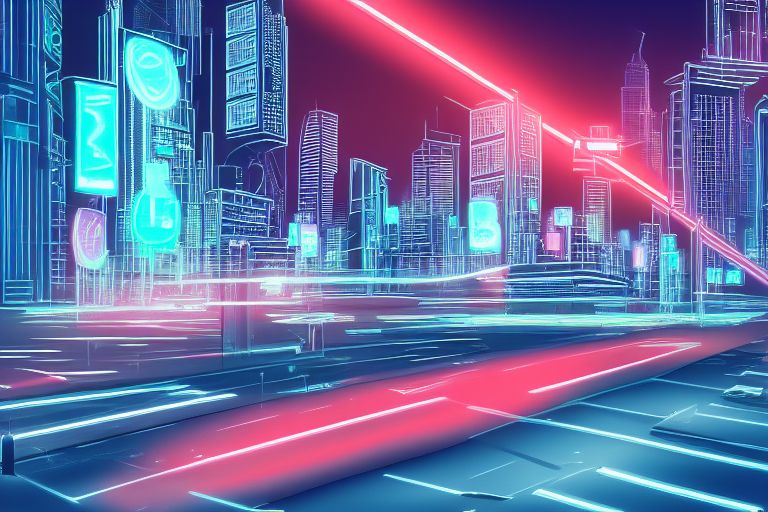
Top Technologies that Power the Metaverse
Tech firms are using cutting-edge technologies to create an immersive metaverse virtual experience, fueled by blockchain, augmented reality (AR) and virtual reality (VR), 3D rebuilding, artificial intelligence (AI), and the Internet of things (IoT).
- Blockchain
- Augmented Reality and Virtual Reality
- Artificial Intelligence
- Internet of Things
- 3D reconstruction
Blockchain
Blockchain is a disruptive technology that allows for the creation of a decentralized, transparent solution for proof of ownership, collectibility, value transfer, governance, accessibility, and interoperability in the digital world. Cryptocurrencies enable people to exchange money while they use their 3D virtual reality headsets.
Decentraland is one example of how blockchain is being used in the metaverse. In this digital world, people can buy virtual land that they own forever. The land cannot be taken away from them and they can do whatever they want with it, including building houses, stores, or monuments.
Another example is The Sandbox, which allows users to create, experience, and monetize content and games in a 3D voxel universe. The Sandbox uses blockchain to give users complete ownership of their virtual creations.
Augmented Reality and Virtual Reality
Both augmented reality (AR) and virtual reality (VR) can be used to create digital worlds that are very similar to the physical world. However, VR is more immersive because it allows you to enter a completely digital world, while AR overlays digital information on the physical world.
Immersive VR experiences are created using 3D reconstruction techniques and computer-generated images. This technology can be used to create realistic environments that look and feel just like the real world.
Facebook is using AR and VR to create the metaverse. The social media giant has acquired Oculus, a VR company, and is working on developing AR glasses. Facebook also owns Instagram, which it plans to use as an AR platform.
Artificial Intelligence
Artificial intelligence (AI) can be used to create realistic avatars that look and behave like real people. AI can also be used to create non-player characters (NPCs) that can interact with people in the digital world.
Nvidia, a company that makes GPUs for gaming, is using AI to create realistic faces for its avatars. The company has developed a system called GameWorks that can generate photorealistic faces.
Microsoft is also using AI to create realistic avatars. The company’s research team has developed a system called SoTA Real-time Avatars that can create 3D avatars that look and behave like real people.
Internet of Things
The internet of things (IoT) is a network of devices that are connected to the internet. These devices can be used to collect data and provide people with information about their surroundings.
IoT devices can be used to create a digital twin of the physical world. This technology can be used to create a realistic environment that looks and feels like the real world.
Nvidia is using the IoT to create a digital twin of the city of Munich. The company’s researchers have developed a system that can collect data from sensors and cameras to create a 3D map of the city.
Microsoft is also using the IoT to create a digital twin of the city of Seattle. The company’s research team has developed a system that can collect data from sensors and cameras to create a 3D map of the city.
3D reconstruction
3D reconstruction is a technique that can be used to create a digital model of the physical world. This technology can be used to create realistic environments that look and feel just like the real world.
Nvidia is using 3D reconstruction to create a digital twin of the city of Munich. The company’s researchers have developed a system that can collect data from sensors and cameras to create a 3D map of the city.
Microsoft is also using 3D reconstruction to create a digital twin of the city of Seattle. The company’s research team has developed a system that can collect data from sensors and cameras to create a 3D map of the city.
Challenges of the Metaverse
The metaverse is still in its early stages of development and there are many challenges that need to be addressed.
One of the biggest challenges is creating a realistic and immersive digital world. This can be done by using technologies like 3D reconstruction, computer-generated images, and artificial intelligence.
Another challenge is making the metaverse accessible to everyone. This can be done by using technologies like the internet of things and virtual reality.
Lastly, the challenge is making the metaverse secure. This can be done by using technologies like blockchain and cryptography.
| Read more about Metaverse |
|---|
| 16 Best Universities for Metaverse and Web3 |
The metaverse is a digital world that is created using technologies like 3D reconstruction, computer-generated images, and artificial intelligence. The metaverse is still in its early stages of development and there are many challenges that need to be.
The metaverse is still in its early stages of development and there are many challenges that need to be addressed. These challenges include creating a realistic and immersive digital world, making the metaverse accessible to everyone, and making the metaverse secure.
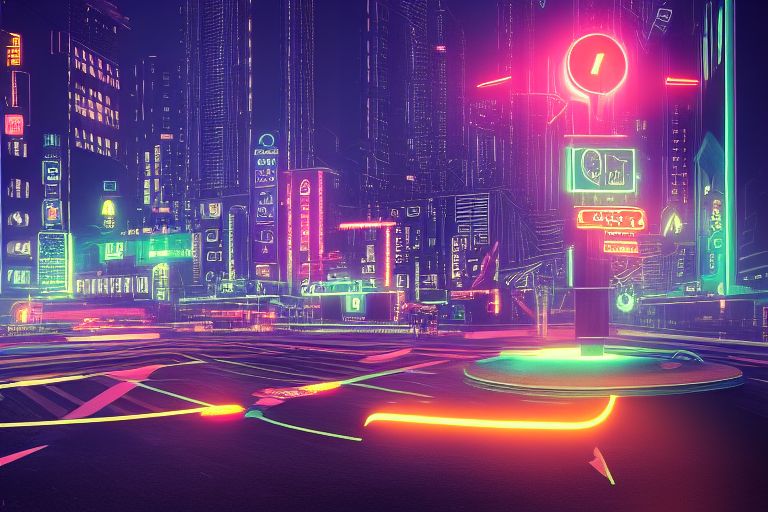
Conclusion
The metaverse is a digital world that is created using technologies like 3D reconstruction, computer-generated images, and artificial intelligence. The metaverse is still in its early stages of development and there are many challenges that need to be addressed.
These challenges include creating a realistic and immersive digital world, making the metaverse accessible to everyone, and making the metaverse secure.
Additional Metaverse resources:
Disclaimer
In line with the Trust Project guidelines, please note that the information provided on this page is not intended to be and should not be interpreted as legal, tax, investment, financial, or any other form of advice. It is important to only invest what you can afford to lose and to seek independent financial advice if you have any doubts. For further information, we suggest referring to the terms and conditions as well as the help and support pages provided by the issuer or advertiser. MetaversePost is committed to accurate, unbiased reporting, but market conditions are subject to change without notice.
About The Author
Damir is the team leader, product manager, and editor at Metaverse Post, covering topics such as AI/ML, AGI, LLMs, Metaverse, and Web3-related fields. His articles attract a massive audience of over a million users every month. He appears to be an expert with 10 years of experience in SEO and digital marketing. Damir has been mentioned in Mashable, Wired, Cointelegraph, The New Yorker, Inside.com, Entrepreneur, BeInCrypto, and other publications. He travels between the UAE, Turkey, Russia, and the CIS as a digital nomad. Damir earned a bachelor's degree in physics, which he believes has given him the critical thinking skills needed to be successful in the ever-changing landscape of the internet.
More articles

Damir is the team leader, product manager, and editor at Metaverse Post, covering topics such as AI/ML, AGI, LLMs, Metaverse, and Web3-related fields. His articles attract a massive audience of over a million users every month. He appears to be an expert with 10 years of experience in SEO and digital marketing. Damir has been mentioned in Mashable, Wired, Cointelegraph, The New Yorker, Inside.com, Entrepreneur, BeInCrypto, and other publications. He travels between the UAE, Turkey, Russia, and the CIS as a digital nomad. Damir earned a bachelor's degree in physics, which he believes has given him the critical thinking skills needed to be successful in the ever-changing landscape of the internet.




















































